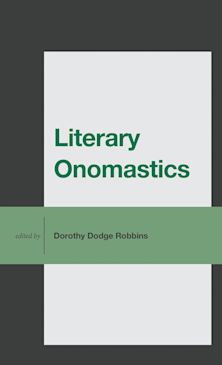- Home
- ACADEMIC
- Linguistics
- Linguistics - Other
- Linguistic and Genetic (mtDNA) Connections between Native Peoples of Alaska and California
Linguistic and Genetic (mtDNA) Connections between Native Peoples of Alaska and California
Ancient Mariners of the Middle Holocene
Linguistic and Genetic (mtDNA) Connections between Native Peoples of Alaska and California
Ancient Mariners of the Middle Holocene
This product is usually dispatched within 1 week
- Delivery and returns info
-
Free US delivery on orders $35 or over
You must sign in to add this item to your wishlist. Please sign in or create an account
Description
Linguistic and Genetic (mtDNA) Connections between Native Peoples of Alaska and California: Ancient Mariners of the Middle Holocene traces the linguistic and biological connections between contemporary Aleut people of southwest Alaska and historic Utian people of central California. During the Middle Holocene Period, Aleut and Utian languages diverged from their common parent language, Proto-Aleut-Utian (PAU), spoken by people who resided on or near Kodiak Island in coastal southwest Alaska. Around the time of divergence, Utians departed the PAU homeland, migrating by watercraft along the eastern Pacific coast to the San Francisco Bay Area. The affiliation between Aleut and Utian languages is strongly supported by comparative linguistics and by the genetic link (mtDNA) of groups speaking these languages. On their migration, Utians encountered coastal groups speaking languages different from their own. Through these prolonged and intimate interactions, words were borrowed from Utian into the languages of these native coastal communities. Other significant findings explored in this book are the lack of compelling evidence for the kinship of Eskimo and Aleut peoples, despite scholarship’s long-term acceptance of this proposal, and the discovery of language-structure features shared by Yeniseian and Na Dene, indicating an historical connection for these circumarctic languages.
Table of Contents
Introduction
Chapter 1: Comparative Approaches in Historical Linguistics
Chapter 2: Evaluation of Aleut-Utian Comparative Evidence
Chapter 3: Structural Similarity of Aleut and Utian
Chapter 4: Mitochondrial DNA Evidence
Chapter 5: Other Relationship Proposals for Aleut and Utian
Chapter 6: Along the Way to San Francisco Bay: Loanwords
Chapter 7: Ethnobiological Setting
Chapter 8: Archaeological Perspective
Chapter 9: Culture History Reconstruction
Chapter 10: Contributions, Controversies, and Continuing Study
Coda
Bibliography
Index
About the Authors
Product details
| Published | Oct 31 2024 |
|---|---|
| Format | Hardback |
| Edition | 1st |
| Extent | 248 |
| ISBN | 9781666915105 |
| Imprint | Lexington Books |
| Illustrations | 9 BW Photos, 5 Charts, 43 Tables |
| Dimensions | 9 x 6 inches |
| Publisher | Bloomsbury Publishing |
About the contributors
Reviews
-
“This is bold work that challenges a number of orthodoxies in the historical linguistics and anthropology of the Americas using an innovative, inter-disciplinary approach to the study of the connections between ancient populations. By rejecting parochial assumptions about the localism of Indigenous cultures, it is sure to re-ignite debates about the linguistic relations between the First Peoples of Western North America and long-distance migration and dispersion of linguistic groups.”
David Beck, University of Alberta
-
This work introduces a striking new theory: the Utian languages of California—Miwok and the coastal languages in the “Costanoan” group—are related not to other Californian languages, but to Aleut. Aleut, in turn, is related not to the Inuit-Yuit languages (“Eskimoan”) but to the Utian. The many similarities of these languages to their neighbors in California and Alaska is due to borrowing, not common origin. The Utians (or Proto-Utians) would have voyaged down the Pacific Coast, from Alaska to California, with stops identifiable by loanwords in coastal languages in British Columbia and Washington. Other language-user migrations are suggested as parallels. The reconstruction of possible migrations is another major contribution. This is an exciting and challenging work. It is supported by a wide range of meticulously collected and analyzed data. It is convincingly argued. The authors are experts in the linguistics and archaeology of the regions. The book presents a formidable challenge to conventional knowledge of North American and Siberian linguistics. Scholars will be debating its rich store of innovative ideas for a long time to come.
Eugene Anderson, University of California, Riverside
-
This is an ambitious analysis of linguistic connections spanning 5000 kilometers of the north Pacific Coast and 5000 years of prehistory. Brown enlists leading archaeological and ethnobotanical scholars to complement his extensive linguistic and genetic analysis. The authors argue for a mid-Holocene colonization of the central California coast by Aleut mariners, a claim certain to generate vigorous scholarly debate.
Eugene S. Hunn, University of Washington

































